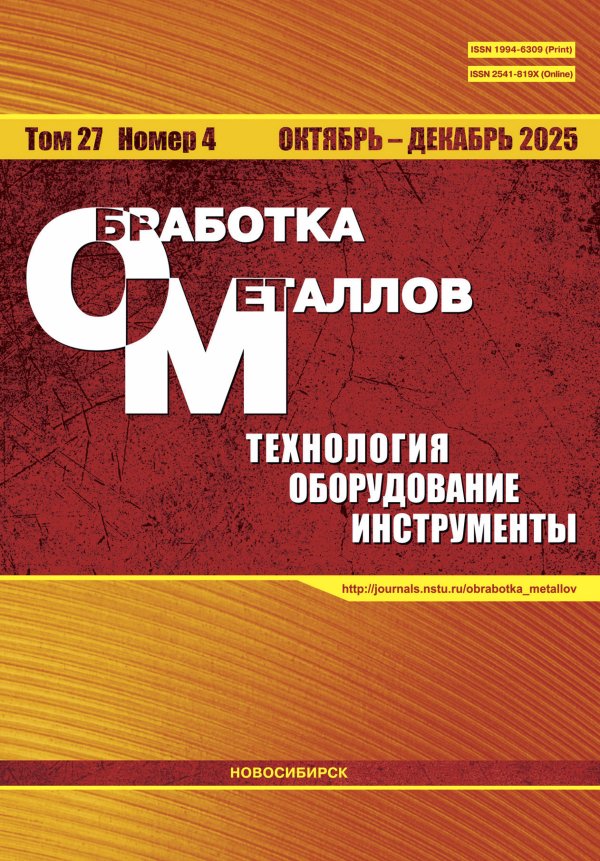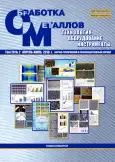Формирование структуры и свойств низкоуглеродистого мартенсита при закалке
- Авторы: Березин С.К.1, Шацов А.А.1, Теренина О.С.1
-
Учреждения:
- Выпуск: Том 20, № 2 (2018)
- Страницы: 144-159
- Раздел: МАТЕРИАЛОВЕДЕНИЕ
- URL: https://bakhtiniada.ru/1994-6309/article/view/302072
- DOI: https://doi.org/10.17212/1994-6309-2018-20.2-144-159
- ID: 302072
Цитировать
Полный текст
Аннотация
Об авторах
С. К. Березин
Email: Semka-ya@mail.ru
аспирант, Пермский национальный исследовательский политехнический университет, Semka-ya@mail.ru
А. А. Шацов
Email: a.shatsov@yandex.ru
доктор технических наук, профессор, Пермский национальный исследовательский политехнический университет, a.shatsov@yandex.ru
О. С. Теренина
Email: olga.terenina@bk.ru
Пермский национальный исследовательский политехнический университет, olga.terenina@bk.ru
Список литературы
- Клейнер Л.М. Низкоуглеродистые мартенситные стали / Пермский государственный технический университет. – Пермь: ПГТУ, 1997. – 71 с.
- Formation of structure and properties of carbide-free bainite in steel 30KHGSA / D.O. Panov, Yu.N. Simonov, P.A. Leont’;ev, M.N. Georgiev, A.Yu. Kaletin // Metal Science and Heat Treatment. – 2016. – Vol. 58, iss. 1–2. – P. 71–75.
- Formation of structure of lower carbide-free bainite due to isothermal treatment of steels of type’;s KH3G3MFS and KHN3MFS / Yu.N. Simonov, M.Yu. Simonov, D.O. Panov, V.P. Vylezhnev, A.Yu. Kaletin // Metal Science and Heat Treatment. – 2016. – Vol. 58, iss. 1–2. – P. 61–70.
- Утевский Л.М. Дифракционная электронная микроскопия в металловедении. – М.: Металлургия, 1973. – 584 с.
- Агбоола О.Ф. Изучение и оптимизация типа и морфологии неметаллических включений в низколегированных высокопрочных сталях: автореф. дис. … канд. техн. наук. – М., 2004. – 18 с.
- Бельченко Г.М., Губенко С.И. Неметаллические включения и качество стали. – Киев: Техника, 1980. – 168 с.
- Куслицкий А.Б. Неметаллические включения и усталость стали. – Киев: Техника, 1976. – 128 с.
- Advancement of the properties of structural steels by creating an optimum form of existence of impurities and nonmetallic inclusions / A.I. Zaitsev, A.B. Stepanov, N.A. Karamysheva, I.G. Rodionova // Metal Science and Heat Treatment. – 2016. – Vol. 57, iss. 9–10. – P. 531–538.
- Effect of microstructure and segregation of elements on the impact toughness of high-strength low-carbon bainitic steel / D. Minxian, P. Huaxia, T. Hongbin, S. Li, O. Ling // Metal Science and Heat Treatment. – 2016. – Vol. 58, iss. 3–4. – P. 138–141.
- Microstructure and mechanical properties of a thick-section high-strength steel welded joint by novel double-sided hybrid fibre laser-arc welding / Y. Chen, J. Feng, L. Li, S. Chang // Materials Science & Engineering A. – 2013. – Vol. 582. – P. 284–293.
- Сталь на рубеже столетий / под науч. ред. Ю.С. Карабасова. – М.: МИСиС, 2001. – 664 с.
- Firth K., Garwood R.D. Fractography and fracture toughness of 5% Cr-Mo-V ultrahigh strength steels // Fracture Toughness of High-Strength Materials: Theory and Practice. – London: Iron and Steel Institute, 1970. – P. 81–89.
- Финкель В.М. Физические основы торможения разрушения. – М.: Металлургия, 1977. – 359 с.
- Ицкович Г.М. Раскисление стали и модифицирование неметаллических включений. – М.: Металлургия, 1981. – 296 с.
- Одесский П.Д., Ведяков И.И., Горпинченко В.М. Предотвращение хрупких разрушений металлических строительных конструкций. – М.: СП Интермет Инжиниринг, 1998. – 219 с.
- Микляев П.Г., Нешпор Г.С., Кудряшов В.Г. Кинетика разрушения. – М.: Металлургия, 1979. – 279 с.
- Krafft J.М. Crack toughness and strain hardening of steels // Applied Materials Research. – 1964. – Vol. 3. – P. 88–101.
- Скороходов В.Н., Одесский П.Д., Рудченко А.В. Строительная сталь. – М.: Металлургиздат, 2002. – 622 с. – ISBN 5-902194-02-4.
- Knott J.F. Fundamentals of fracture mechanics. – New York: Wiley, 1973. – 273 p.
- Verma D.K., Berry J.T. Microstructural and macrostructural modeling of the fracture behavior of pearlitik gray irons // Journal of Engineering Materials and Technology. – 1982. – Vol. 104. – P. 262–266.
- Fracture: an advanced treatise. Vol. 3. Engineering fundamentals and environmental effects / ed. by H. Liebowitz. – New York: Academic Press, 1971. – 753 p.
- Formation of grain and lath structure in low-carbon martensitic steels by heat cycling / I.V. Ryaposov, L.M. Kleiner, A.A. Shatsov, E.A. Noskova // Metal Science and Heat Treatment. – 2008. – Vol. 50, iss. 9–10. – P. 435–441.
- Эволюция фазового состава, дефектной структуры, внутренних напряжений и перераспределение углерода при отпуске литой конструкционной стали / Э.В. Козлов, Н.А. Попова, О.В. Кабанина, С.И. Климашин, В.Е. Громов. – Новокузнецк: Изд-во СибГИУ, 2007. – 177 с.
- Structure, phase transformations, mechanical characteristics, and cold resistance of low–carbon martensitic steels / V.A. Kozvonin, A.A. Shatsov, I.V. Ryaposov, M.G. Zakirova, K.N. Generalova // The Physics of Metals and Metallography. – 2016. – Vol. 117, N 8. – P. 834–842.
Дополнительные файлы







